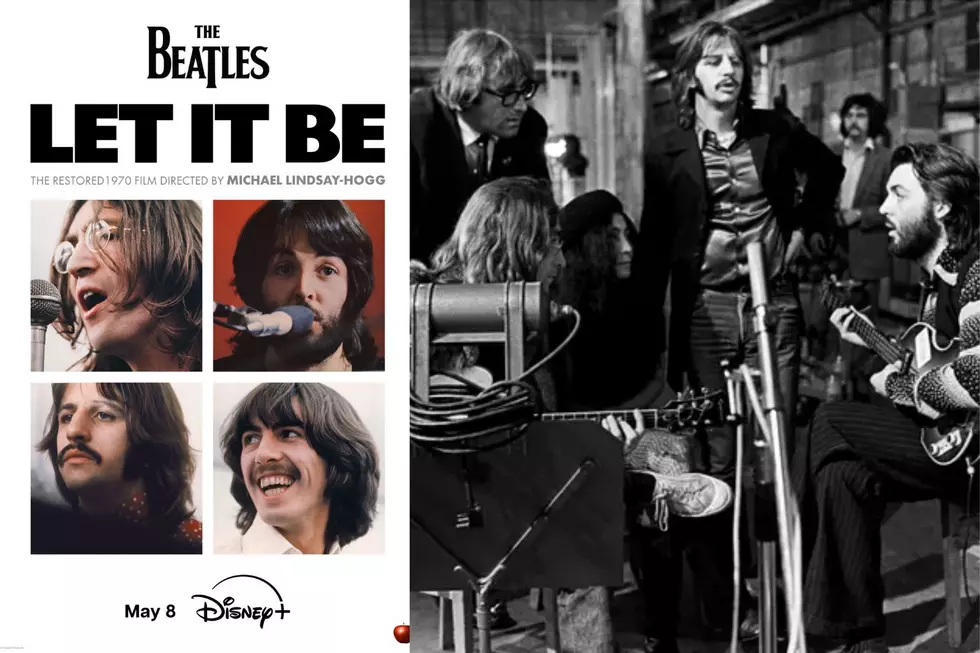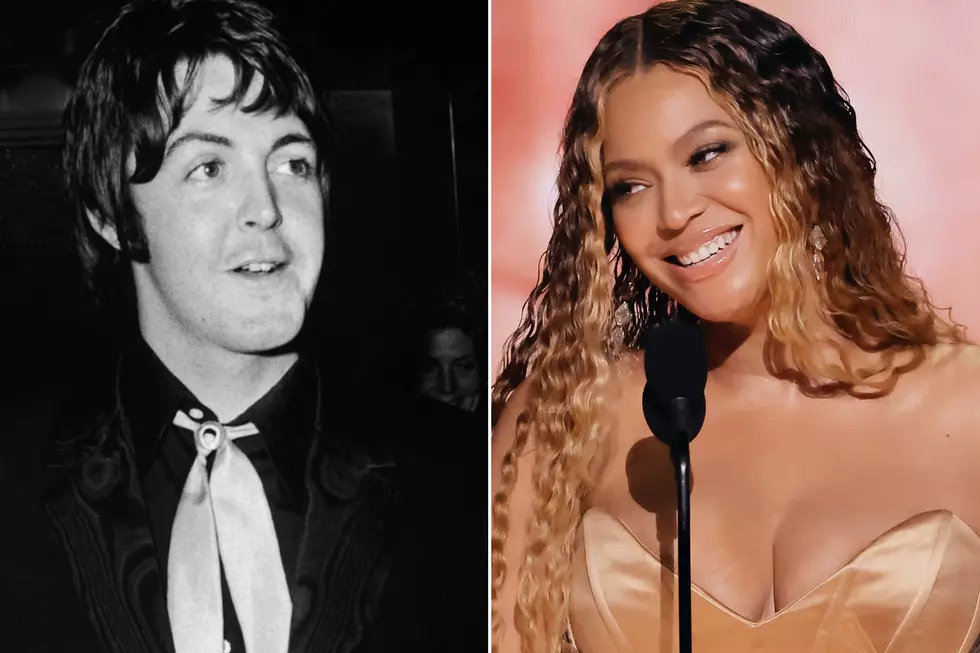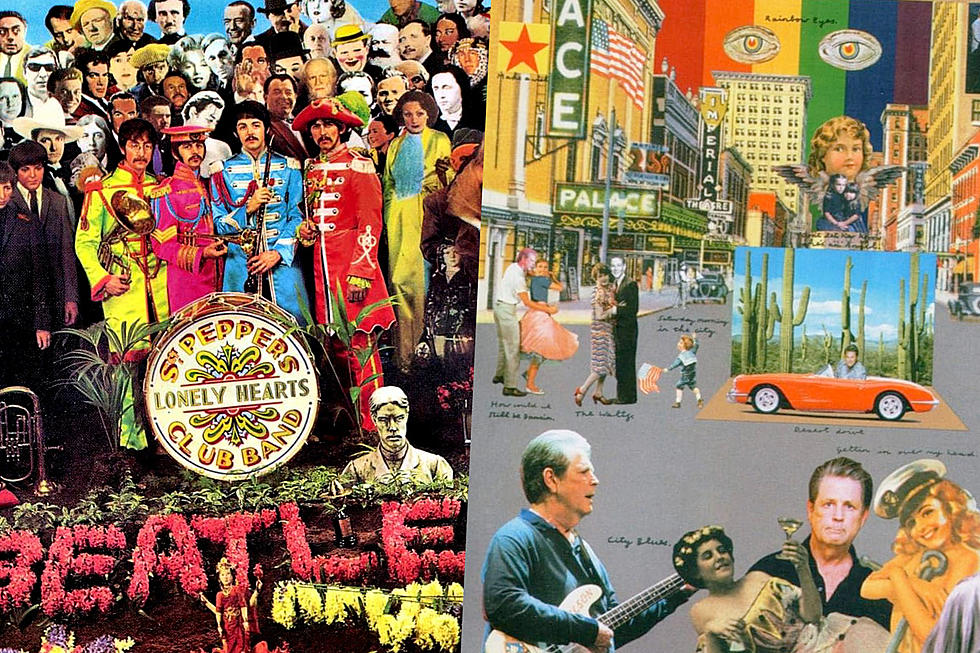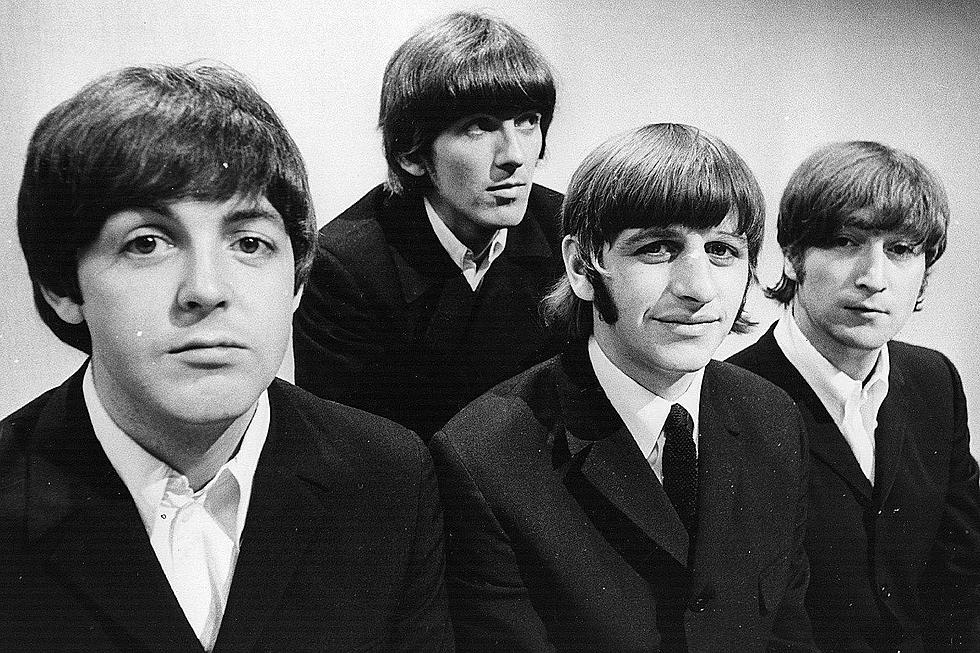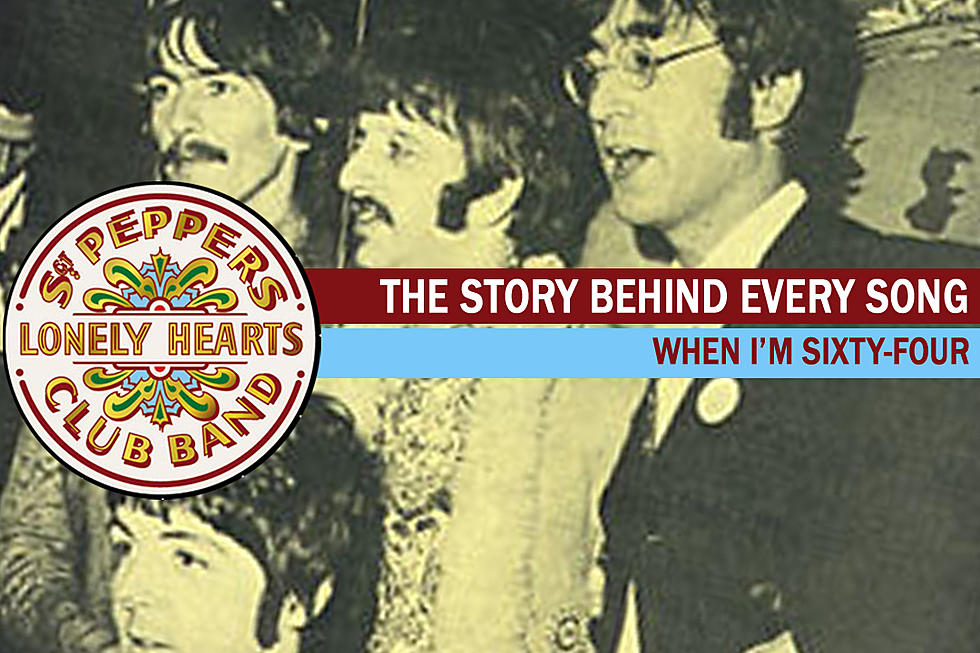
The Beatles Turn Back the Clock on ‘When I’m Sixty-Four’: The Story Behind Every ‘Sgt. Pepper’ Song
If “When I’m Sixty-Four” sounds so simple a child could have written it, that’s what kind of happened.
A very young Paul McCartney wrote the original version of this bouncy tune at the family piano when he was between the ages of 14 and 16. McCartney was channeling music from another era, as well as the pop standards that existed just as rock ’n’ roll was becoming established in the late ’50s.
“I’d started fiddling around on my dad’s piano,” McCartney told Rolling Stone in 1974. “I wrote ‘When I’m Sixty-Four’ on that when I was still 16 -- it was all rather tongue in cheek -- and I never forgot it. I wrote that tune vaguely thinking it could come in handy in a musical comedy or something. Like I say, I didn’t know what kind of career I was going to take back then. ... I wasn’t necessarily looking to be a rock ’n’ roller. When I wrote ‘When I’m Sixty-Four,’ I thought I was writing a song for [Frank] Sinatra. There were records other than rock ’n’ roll that were important to me. And that would come out in the Beatles doing songs like ‘Till There Was You’.”
Show tunes and standards played a big part in McCartney’s musical upbringing by way of his father, Jim, who had played in a big band. A picture of the elder McCartney, standing in front of a drum head that announced the “Jimmy Mac Jazz Band,” became an inspiration for the drum head that appeared on the cover of Sgt. Pepper’s Lonely Hearts Club Band.
Despite being a decidedly un-rock ’n’ roll novelty song, “When I’m Sixty-Four” stayed with McCartney, who would actually trot out the tune in the Beatles' early days, whenever the electrical equipment failed the band. Both drummer Pete Best and John Lennon remember McCartney playing it on piano with the boys onstage.
“Paul wrote this when we was in the Cavern,” Lennon recalled in 1967, misunderstanding that the song dated back even further. “We’ve just wrote a few more words on it, like ‘grandchildren on your knee,’ and stuck in ‘Vera, Chuck and Dave.’ It was just one of those ones that he’d had, that we’ve all got, really – half a song. And this was just one of those that was quite a hit with us. We used to do them when the amps broke down, just sing it on the piano.”
It wasn’t until the Beatles entered EMI’s London studios in the fall of 1966 that McCartney thought to resurrect “When I’m Sixty-Four.” The exact reason has never been given, although people like producer George Martin point out the fact that McCartney’s dad had turned 64 that July. It’s also probable that McCartney felt comfortable trying out a non-rock song now that his band had decided they were going to become a studio-only outfit. There would be no pressure to recreate this old-timey song onstage with the lads.
The Beatles had been working on “Strawberry Fields Forever” for a few weeks when they decided that the song was complete (although they’d still tinker with it) and moved on to tackle “When I’m Sixty-Four.” Seeing as “Strawberry Fields” was put out as a single-only release in February 1967, “When I’m Sixty-Four” became the first song recorded for what would become Sgt. Pepper.
Because all four Beatles were well-acquainted with McCartney’s old song – even if it had a few new lyrics and, perhaps, a new bridge – the initial sessions went quickly on Dec. 6, 1966. With McCartney on bass, Lennon on electric guitar and Ringo Starr on drums, the band knocked out the tune’s foundation in a couple of takes. McCartney's bass and Starr's rhythms are most prominent in the final recording, with Lennon’s jazzy guitar making its presence known towards the song’s finale. McCartney overdubbed a chiming piano part onto the tape, then recorded his lead vocal on Dec. 8. His stifled laugh near the end might have been his reaction to hearing Lennon’s goofy guitar vamp.
The band returned to working on “Strawberry Fields” before returning to complete “When I’m Sixty Four,” with George Harrison finally contributing background harmony vocals (with Lennon and McCartney) on Dec. 20. The same session also found Starr playing the strategically placed tubular bells. Somewhere along the way, McCartney got it in his head that the recording was still missing something.
“As was usual for a McCartney song, there were extensive discussions with George Martin about arrangement,” engineer Geoff Emerick said in Here, There and Everywhere. “Paul kept saying that he wanted the song to be really ‘rooty-tooty,’ so George suggested the addition of clarinets.”
Working from McCartney’s idea, Martin arranged an accompaniment for a clarinet trio: two “standard” b-flat clarinets and one bass clarinet. The three professional woodwind players came into EMI studios on Dec. 21 and knocked out their part. After a mix of “When I’m Sixty-Four” was achieved, the song was complete … at least that’s what Martin and Emerick thought. McCartney wasn’t thrilled with the result and asked for one, small change.
“During the mix, Paul also asked to have the track sped up a great deal – almost a semitone – so that his voice would sound more youthful, like the teenager he was when he originally wrote the song,” Emerick recalled, a memory backed up by Martin. McCartney said he had a different motive for bringing the song up from C to C-sharp: “I think that was just to make it more rooty-tooty; just lift the key because it was starting to sound a little turgid.”
In all of its rootiness and tootiness, “When I’m Sixty-Four” was done and the group moved on to focus on another McCartney composition, “Penny Lane.” Weeks later, the two songs nearly switched their roles in history, because Martin and Beatles manager Brian Epstein nearly chose to release “When I’m Sixty-Four” as the B-side to “Strawberry Fields” instead of making a double A-sided single out of “Fields” and “Penny Lane.” Although Martin later called that a mistake (feeling that “Strawberry Fields Forever” and “Penny Lane” could have had more impact separately), the decision made “When I’m Sixty-Four” an indelible part of Sgt. Pepper.
Apart from contributing to the strange flavors of the Sgt. Pepper LP, the song began a run of old-fashioned, dance hall tunes written by McCartney. In the next couple years, he would write and record both “Your Mother Should Know” and “Honey Pie” with the Beatles, each in a sort of jazz standard style. Although “mother” was invoked on one of those tunes, the aesthetic was really a tribute to McCartney's father.
“He played piano from when I was born,” McCartney remembered in The Beatles Anthology. “He was my musical education. There was none in school, we never got music lessons. He would always point out thinks like the chord changes at the beginning of ‘Stairway to Paradise.’… Dad was a pretty good self-taught pianist, but because he hadn’t had training himself, he always refused to teach me. … In the end, I learnt to play by ear, just like him, making it all up.”
Beatles' 'Sgt. Pepper's' Cover Art: A Guide to Who's Who
More From Ultimate Classic Rock
